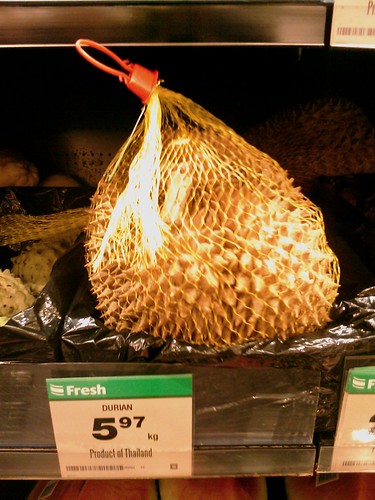
Shadow Hare and Dark Guardian ... just two of the masked men and women seeking to fight for justice and the American way.
It's certainly not a bird, or a speeding bullet, or a plane. It looks more like a guy in a silly lycra outfit.
Wearing masks and the full superhero get-up, a band of "real life superheroes" are patrolling the world's cities trying to clean up the streets.
So claim the comic book-like crime-fighters, a loose association of costumed do-gooders who say they are taking up the fight for justice for ordinary people.
Boasting names like Dark Guardian, Citizen Prime, and Green Scorpion, the mainly US-based characters say they need to wear outfits to protect their identities from the evil-doers they attack.
Most have MySpace pages where they reveal the philosophy of their superheroism.
Florida superhero Amazonia wrote why she was prompted to strap on the black Zorro-like mask and defend her city, Ocala:
"I finally had enough of seeing the gangs terrorizing the downtown section of my city. They would mug, beat and otherwise harass senior citizens and women.
"So I took up the mantle of Firebird and set out to do what I could to help others."
Many of the superheroes say they are armed with weapons such as stun guns, which can be legally carried in the US.
"Shadow Hare", a 1.7 metre, slight-of-stature 21-year-old Cincinnati resident who carries handcuffs, a stun-gun and pepper spray, boasts: "I've stopped many evil doers ... such as drug dealers, muggers, rapists, and crazy hobos with pipes."
Many of the superheroes' good deeds are of a civic nature - such as volunteering with charities or feeding the homeless.
But some make more bolder claims of actual crime-fighting.
Shadow Hare said he dislocated his shoulder two years ago while helping a woman who was being attacked.
He also said he was working with a San Diego-based superhero called Mr Extreme to "track down a rapist".
On his MySpace page, Dark Guardian writes of the moment he saw two men with baseball bats waiting to beat someone up outside their house late at night.
"I park across the street from them. I wait and watch them. I make sure they see me so they know someone is watching, soon after they leave.
"I didn't have to go and fight two guys with bats to stop a crime. I just made my presence known and they decided to stop what they were trying to do."
On another occasion he writes of confronting a deranged man trashing a store.
"I stood in front of him and made sure everyone got out of the store. I tried talking him down. The store had already called the cops.
"Once the police came he cooperated and was hauled away. If he came at me or anyone else this story would end differently and I would have been in court myself because I had my knife at the ready.
"Glad it ended the way it did."
Some superheroes also formed together under different banners to tackle crimes in unison, such as the Allegiance of Heroes.
One such group, titled the Justice Society Of Justice, claims to offer "twice the JUSTICE as the leading competitors!".
An online "Superhero Registry" lists members of the "the Real-Life Superhero community", outlining their speciality (for example public service or crime-fighting), where they patrol, whether their identity is secret and if their status as a superhero has been confirmed.
The website states the superheroes are not just role-playing, but that this is "a movement among ordinary people to make the world a better place in an extraordinary way".
"There are always those who will take something less seriously, but the Real-Life Superhero community is generally composed of sincere, well meaning people who have finally decided to go out and make a difference."
The heroes wear costumes to inspire others, protect their privacy, and "conceal vulnerabilities in one's protective gear", the site says.
People can also make their own submissions to be added to the registry but acceptance usually requires evidence of heroic activities through "media documentation of such activities, or testimonials from established Real-Life Superheroes".
On his MySpace page, superhero Dark Guardian also writes of the weight of expectation on real superheroes.
"What I got most out of being a Real Life Superhero is living up to the name. I have to be the living embodiment of a superhero. With that comes great responsibility.
"I have walked away from being a Real Life Superhero before , but I couldn't give it up. It is who I am. It is what I believe in.
"And it will help change the world."
But police appear not to have warmed to the idea.
"We expect people to report crime to the police and not put themselves in jeopardy," New York Police Department spokesman Deputy Police Commissioner Paul Browne said in an article about the "superheroes" last year.
http://www.smh.com.au/world/shadow-hair-mr-extreme-and-the-notreallysuper-heroes-20090504-asau.html?page=-1
 Last weekend it was Pei Lin's birthday.
Last weekend it was Pei Lin's birthday.























